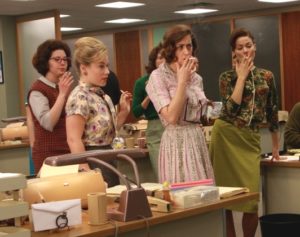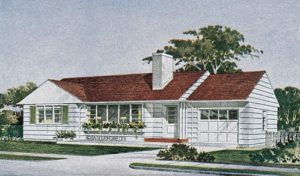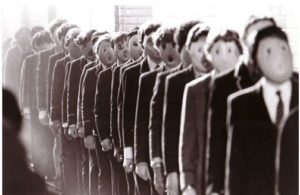Was life better back then than it is today? We all see a lot of memes out there that suggest that reality. Just today, this made it across my Facebook feed:
It got me thinking and, when I think, I research, and when I research, I write.
And three hours later, here we are.
And here we go.
First Things First
Let’s acknowledge that modern America has:
- less racism (many races couldn’t find work “back in the day” unless it was the lowest end of blue collar),
- less homophobia (which lasted a crazy long time and in which we have made amazing progress rapidly: we went from Matthew Shepherd in 1998 to Gay Marriage in 2015),
- better rights for women (almost all of whom couldn’t find work “back in the day” unless it was as a secretary/waitress/teacher/nurse/prostitute), though they still get paid less today to do the same jobs as men, and
- less crime, with the exception of sexual assault and spousal abuse, which is more-likely due to people today actually reporting them because, again, we live in a better world where people feel they can go to the police to report such things and be taken seriously (as long as they’re not a man).
Now, usually, when people talk about how “life was better back then than it is today,” the words “back then” generally refer to the period between WWII and the Civil Rights Movement, so we’ll focus mostly on life in the 1950s.
Let’s Talk About Money
And we’ll use modern dollars, so it’s easier to follow.
Minimum wage was
- $7.50/hour in 1950,
- $7.75/hour in 1960,
- $9.50/hour in 1970,
and it has dwindled back down to that seven-dollar mark ever since…though it bottomed-out from the 1990s to the 2000s, when it was in the $6/hour-to-$7/hour range.
So the way we often think of the “more prosperous than now 90s,” in retrospect, actually had a ton of people making less at their minimum wage jobs than they do today. The difference was that they were living in a [generally] better world than they had been previously, without paying for the things we choose to pay for today.
I’ll get back to that in just a second. First,
Let’s Talk About Family
- In 1958, 30% of American families made less than $25k/year
- In 2014, 30% of American families made less than $25k/year
- In 1958, 60% of American families made less than $50k/year
- In 2014, 50% of American families made less than $50k/year
- In 1958, 30% of American families made between $50k/year-$100k/year
- In 2014, 30% of American families made between $50k/year-$100k/year
- In 1958, 3% of American families made more than $125k/year
- In 2014, 15% of American families made more than $125k/year
While it’s unfortunate how we have kept the poor in poverty, the poor haven’t gotten poorer, and there’s not a greater percentage of them than before. Conversely, there are a lot more people who are rich, and that’s not actually a bad thing. The backlash of that prosperity is that poor people are less comfortable being poor and have a desire to live lifestyles they can’t afford.
I Promised I’d Get Back To It
One huge thing that affects modern life is technological advancement.
Households in the bottom-half of earners from the 1950s-1970s were not paying 5%-15% of their income to cable TV, internet, and cell phones.
Let’s say your family only spends $200/month on your cable/internet/cell bills.
That’s $2400/year in a nation where a third of families make less than $25000/year: that’s at least 10% of your family’s income, just to “stay connected.”
So if we want to live life like it’s “back in the day,” that means actually doing it. That means having far less entertainment options, far less access to information, and not being able to call an ambulance if you witness an accident. However, many people will be unable to completely shut the internet out of their lives. A way that you could potentially save some money is through searching for the best home internet deals online, this would still allow you to access entertainment options as well as communication methods, but for much less money.
Nowadays, having access to things like the internet or the TV is something that no one can live without. Most US homes have directv packages or something similar which gives them access to hundreds of channels. Having the internet gives them the opportunity to socialize with their friends on social media, as well as catching up with the latest box sets on Netflix or Sky. But, just think about this for a minute. None of this would be possible without electricity. Electricity is at the forefront of all of our favourite downtime activities, and without it, people would find it hard to survive. The only problem is is that you may be paying more for your bills than what you’d like to, as well as paying for more electricity than you need. Electricity providers, similar to Entrust Energy, provide low electricity rates with fixed electricity to its customers, so they could be saving a lot of money in this area. This could allow you to spend more money on the things that matter, like your food and telephone bill, so you can call that ambulance if you need to.
Let’s Talk Cars
In the 1950s the price of a new car was $15k-$20k for a standard sedan, going up to $35k for something more luxurious, like a Chrysler or a Corvette.
Today, a Ford Fusion will run you $22k (and it beats the Hell out of a 1950s Fairline, especially in terms of safety features) and a Chrysler 300 is more like $32k.
Not vastly different (except for the cost of that Corvette, which is now an insane $55k).
What’s really changed is that that fewer average people in the 50s/60s had the goal of owning a car that cost half as much as their house.
Which brings us to…
Houses
- was $80k in 1950,
- was $100k in 1960, and
- is $120k today.
But the average home size in 1950 was 950sqft and today it’s 2500sqft.
The reality is that the size of the average American home has increased by 500sqft per decade since 1950, with prices per square foot actually going down the entire time.
Going back to family:
- the average size of a family in 1960 was 3.7 people;
- the average size of a family in 2016 is 3.1 people.
So, yes, the average house costs 50% more today than in 1950, but is also 250% bigger and has 15% fewer people in it.
So What About Food?
- baby food was $.80/jar
- bread was $1.10/loaf
- lettuce was $1.10/head
- cereal was $1.50/box
- Pillsbury rolls were $2.00/tube
- hamburger was $2.50/pound
- peanut butter was $2.50/jar
- Kraft singles were $3.00/pack
- bacon was $3.50/pound
- chicken breast was $4.00/pound
- eggs were between $4.00/dozen and $7.00/dozen (seriously)
- fresh mushrooms were $5.00/pound
- frozen veggies were $5.00/pound
- sirloin was between $5.00/pound and $10.00/pound
- freeze-dried coffee was $10.00/container
You get the idea. It wasn’t that much different than today. Except their food preparation sucked. Go look at a 1950s cookbook. It’s a culinary horror show. Seriously: it was awful.
What’s the big difference in what we spend on food, then and now? We spend far less on food now than we did then thanks to better dining options. Back in the 1950s, going to restaurants was cost-prohibitive to everyone except rich people (which might have, maybe, contributed to women being kept in the kitchen).
Please Don’t Get Me Wrong
I’m not saying that the modern world is without its issues.
But before we get all nostalgic for a time we misremember, let’s remember that we actually live in a better time than we did before, in almost every way.
Most of our issues come from continual complacency thanks to advancements in living:
- children used to be raised by parents, then by TV, now by tablets;
- more people feeling entitled to more because they see more people having more;
- our population doubling since 1950;
- how we spend 2.5-times more money today on education as we did in the 1950s while arguably achieving worse results.
And those are just a few issues that we all need to work together to solve, so we can keep making America great, as we have continuously done since its inception.
We have a lot of work to do, especially in finding a way to make the bottom 30% of Americans raise their standards of living. And we will always have a lot of work to do, in different ways, as we continue to progress.
But America doesn’t need to be made great again. It is great. The USA is as good, and in some ways substantially better, than it was when previous generations were raising their families.
Share this:
- Click to email this to a friend (Opens in new window)
- Click to share on Facebook (Opens in new window)
- Click to share on Google+ (Opens in new window)
- Click to share on Pinterest (Opens in new window)
- Click to share on Reddit (Opens in new window)
- Click to share on Tumblr (Opens in new window)
- Click to share on Twitter (Opens in new window)







Your source for food prices has different data than what you have posted — “Eggs 79 cents for a dozen New Jersey 1956”. “Hamburger meat 89 cents for 3 pounds Ohio 1957.” There’s a HUGE difference in prices.
You need to adjust for inflation. In 1957, hamburger meat was 89 cents for 3lbs. After adjusting for inflation, that is $7.62 for 3lbs, or $2.54 per pound. The list above shows $2.50 per pound, which is expected as, right at the start of the article, the author wrote “Don’t worry. I’ll use round figures.”.